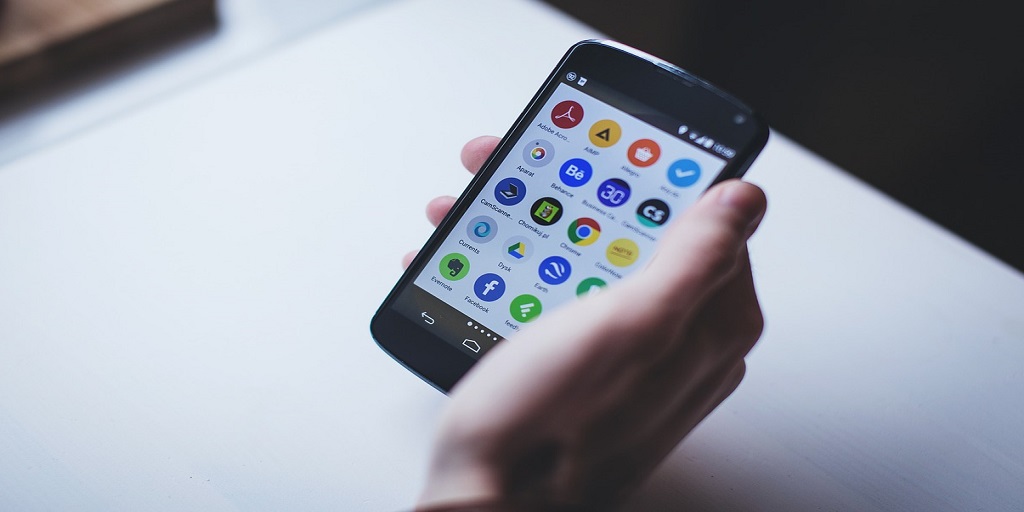Android is a mobile operating system that is found in a majority of touch screen smartphones and tablet devices.
As of Feb 2021, 71.9% of the world’s smartphones are embedded with the Android operating system followed by Apple’s iOS and Samsung with the percentage share of 27.33% and 0.39% respectively. According to Wikipedia, there are more than 2.5 billion Android-based smartphone and smartwatch users.
About Android:
The mobile operating system Android was first developed by the company named Android Inc. which was formed by three developers Andy Rubin, Rich Miner, Nick Sears, and Chris White back in 2003 in California. Initially, they were working on a project of developing an advanced operating system for digital cameras especially for DSLR but after marketing assessment, they found that the market for cameras would not support long-term profit and success to the company as the company was already struggling to raise sufficient funds. This forced them to drop the project and later they started to focus on developing an operating system for mobile handsets with the intention to develop a smartphone that is more aware of its owner’s location and preference.
Identifying the potential of the Android operating system in mobile technology, Google acquired Android Inc. in 2005 for $50 million. Andy Rubin, Rich Miner, Nick Sears, and Chris White were also acquired by Google and the project was headed by Andy Rubin. Finally, in September 2008, HTC Dream became the first android embedded smartphone.

Android is an open-source software which means the software’s source code is released under a license that grants users to use, modify and distribute the software for any purpose including commercials.
Android Versions:
Since its first launch of android software in 2008, the Android operating system is regularly updated by Google and the Open Handset Alliance (OHA) in order to bring new features and user experience. With every new update of the android version, there is an increase in API level.
Earlier the android version updates were named with dessert name, the first letter starting with alphabetical order but in 2018 Google announced that it will be naming upcoming android versions with numerical beginning from Android 10.
Android 1.0
Name – No official name
Release date – 23 Sept 2008
API Level – 1
Android 1.1
Name – No official name
Release date – 09 Feb 2009
API Level – 2
Android 1.5
Name – Cupcake
Release date – 27 April 2009
API Level – 3
Android 1.6
Name – Donut
Release date – 15 Sept 2009
API Level – 4
Android 2.0 – 2.1
Name – Eclair
Release date – 26 Oct 2009
API Level – 5-7
Android 2.2 – 2.2.3
Name – Froyo
Release date – 20 May 2010
API Level – 8
Android 2.3 – 2.3.7
Name – Gingerbread
Release date – 06 Dec 2010
API Level – 9-10
Android 3.0 – 3.2.6
Name – Honeycomb
Release date – 22 Feb 2011
API Level – 11-13
Android 4.0 – 4.0.4
Name – Ice Cream Sandwich
Release date – 18 Oct 2011
API Level – 14-15
Android 4.1 – 4.3.1
Name – Jelly Bean
Release date – 09 July 2012
API Level – 16-18
Android 4.4 – 4.4.4
Name – KitKat
Release date – 31 Oct 2013
API Level – 19-20
Android 5.0 – 5.1.1
Name – Lollipop
Release date – 12 Nov 2014
API Level – 21-22
Android 6.0 – 6.0.1
Name – Marshmallow
Release date – 05 Oct 2015
API Level – 23
Android 7.0 – 7.1.2
Name – Nougat
Release date – 22 Aug 2016
API Level – 24-25
Android 8.0/8.1
Name – Oreo
Release date – 21 Aug 2017/05 Dec 2017
API Level – 26/27
Android 9
Name – Pie
Release date – 06 Aug 2018
API Level – 28
Android 10
Name – Android 10
Release date – 03 Sept 2019
API Level – 29
Android 11
Name – Android 11
Release date – 08 Sept 2020
API Level – 30
Android 12
Name – Android 12
Release date – October 4, 2021
API Level – 31
Android 12L
Name – Android 12L
Release date – March 7, 2022
API Level – 32
Android 13
Name – Android 13
Release date – August 16, 2022
API Level – 33
Difference between a stock android and User Interface(UI) mobile device –
Have you noticed the difference between the graphics of say two smartphones that is Nokia 6.1 Plus and the Redmi Note 9 pro? The latter one has more preinstalled apps (other than Google apps), more features, and also customizable options while the former one has a limited number of preinstalled apps and limited features. In Nokia 6.1 Plus users have to download certain apps for additional features like beautification in-camera option, to display internet speed, photo or pdf viewer other than Google’s product, etc. whereas in Redmi Note 9 pro there are several additional apps are preinstalled for customization and this is due to the preinstalled software called User Interface(UI) in the android operating system.
A User Interface(UI) is software that is developed by the device manufacturer in order to give a better user experience. In Redmi Note 9 Pro MIUI 6(Mi UI version 6) is preinstalled. This can be seen under the About Device section in settings. Many device manufacturers have developed their own UI software for example MIUI, Samsung Experience, HTC Sense, EMUI (Huawei), OxygenOS (OnePlus).

So the UI installed by the device manufacturers is responsible for customizable options and overall look in the phone. In Nokia 6.1 plus, its device manufacturer Nokia does not integrate any UI software in the android operating system. The android operating system is unaltered and is installed as it is developed by Google, and the device which has an unaltered Android operating system is called Stock Android phone, here Nokia 6.1 plus is a stock android phone. A stock android is also called pure Android or vanilla Android.
Redmi Note 9 Pro is not a stock Android phone and has UI integrated into the android operating system.
So the basic difference between the stock Android device and UI device is the alteration of the android operating system. A UI device gives various customizable options, attractive graphics options whereas stock Android devices support only light mode or dark mode. The template of both devices is totally different.
Storage and power consumption in stock android phone –
The more the lines of code the more is the storage space. The integration of UI into the android means adding more lines of code into the operating system hence increasing the storage space of the devices and executing these lines of codes require an additional power supply. Hence the UI mobile devices consume more power and demand high battery capacity whereas the stock Android phone does not draw any additional powers.

About Android update –
Stock Android phones receive OS updates as soon as the new android versions are released into the market. The UI phone users have to wait for more time because their device manufacturer will integrate UI into the new android version, then testing and error fixing, and then finally releasing for download. All these processes take time.
Useful Glossary –
- Operating system – A software that manages every task of the computer in an efficient way.
- Open-source software – A software whose source code can be modified by anyone can be used for commercial purpose.
- UI – User Interface, a software designed for better user experience.



